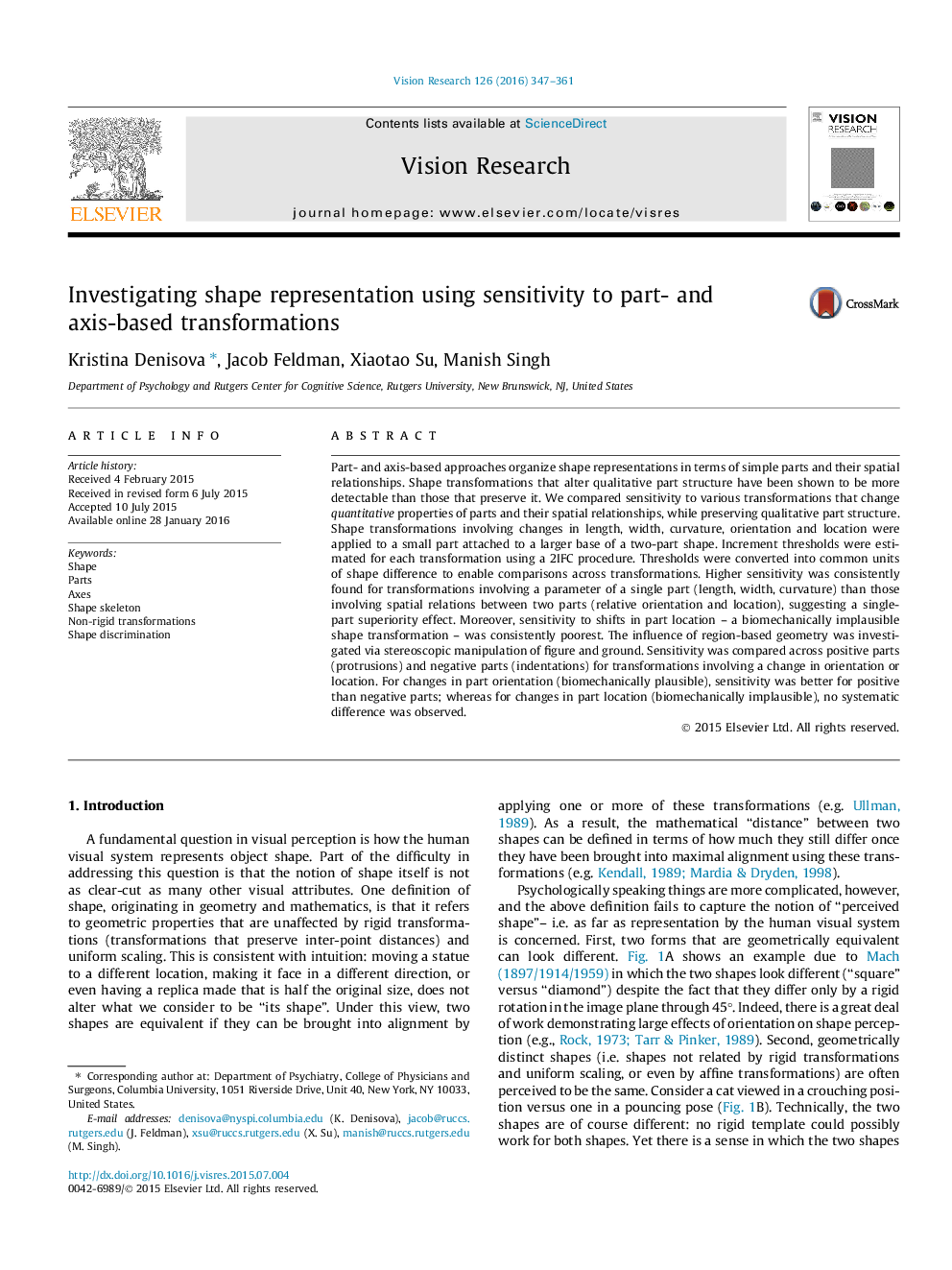| Article ID | Journal | Published Year | Pages | File Type |
|---|---|---|---|---|
| 6202952 | Vision Research | 2016 | 15 Pages |
â¢Visual sensitivity to shape transformations is influenced by region-based geometry.â¢Physical metrics of shape difference are insufficient to predict human sensitivity.â¢Biomechanical plausibility of part-based transformations plays an important role.
Part- and axis-based approaches organize shape representations in terms of simple parts and their spatial relationships. Shape transformations that alter qualitative part structure have been shown to be more detectable than those that preserve it. We compared sensitivity to various transformations that change quantitative properties of parts and their spatial relationships, while preserving qualitative part structure. Shape transformations involving changes in length, width, curvature, orientation and location were applied to a small part attached to a larger base of a two-part shape. Increment thresholds were estimated for each transformation using a 2IFC procedure. Thresholds were converted into common units of shape difference to enable comparisons across transformations. Higher sensitivity was consistently found for transformations involving a parameter of a single part (length, width, curvature) than those involving spatial relations between two parts (relative orientation and location), suggesting a single-part superiority effect. Moreover, sensitivity to shifts in part location - a biomechanically implausible shape transformation - was consistently poorest. The influence of region-based geometry was investigated via stereoscopic manipulation of figure and ground. Sensitivity was compared across positive parts (protrusions) and negative parts (indentations) for transformations involving a change in orientation or location. For changes in part orientation (biomechanically plausible), sensitivity was better for positive than negative parts; whereas for changes in part location (biomechanically implausible), no systematic difference was observed.
